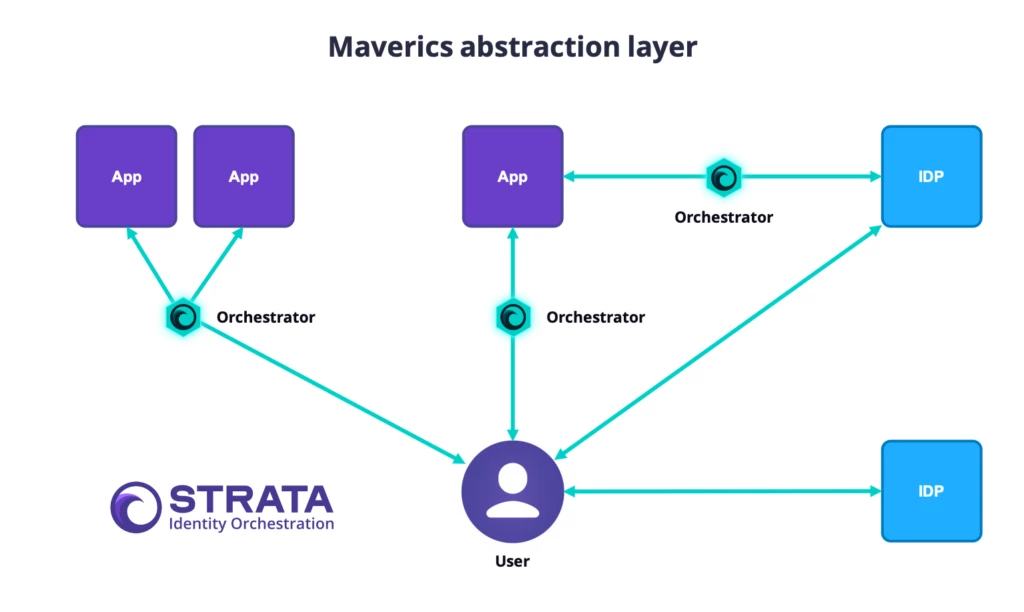
2023-12-20 01:0:0 Author: www.microsoft.com(查看原文) 阅读量:13 收藏
This blog post is part of the Microsoft Intelligent Security Association guest blog series. Learn more about MISA.
Along with every merger and acquisition between two companies comes the need to combine and strengthen their IT infrastructure. In particular, there is an immediate and profound impact on the identity and access management (IAM) postures of both companies. With a newly combined workforce, where does all the user information live? Where are the authentications going to be handled? What changes are going to be made for authorization to applications; will users have access to the apps of the other organization? All these problems must be solved quickly in order to provide continuous day-to-day operations in a secure way.
While most combined organizations aspire to eventually consolidate their identity systems, this is a challenging and time-consuming process. The untangling (and re-entangling) of dozens or hundreds of enterprise applications and their identity stacks takes time and deliberation. Meanwhile, there may be immense pressure from users and app owners for secure access to the appropriate apps, along with pressure from regulators and investors to unlock and demonstrate value from the combined organization. Not to mention the pressure from investors and the board to deliver immediate value after the transaction’s close.
As one of the most comprehensive and advanced IAM platforms available today, Microsoft Entra ID is often the choice to be the dominant set of identity services in the combined architecture. Microsoft strives to make the merger and acquisition process as easy as possible and works with Strata Identity for a seamless integration. Strata’s Maverics Identity Orchestration platform does this by acting as abstraction layer to accelerate and simplify the path to consolidation.
The identity challenges with mergers and acquisitions
Addressing IAM issues is one of the most pressing issues in a merger and acquisition scenario. Typically, other operational issues such as application workloads can continue to operate in their status quo indefinitely until such time as it makes sense to address them. The cybersecurity implications of user access, however, are immediate and need to be addressed quickly, whether this be through some sort of identity consolidation, or through a higher-level abstraction encompassing the existing systems.
One factor that makes a migration complex is the tendency for applications to be tightly coupled with their current identity provider (IdP). When creating an application, developers and app owners may end up writing code that is very specific to their current IdP. Switching that IdP is seldom trivial, especially for long-lived applications that may have been written against a now-legacy protocol, or may have “rolled their own” authentication and authorization. Very often this calls for a complete rewrite of the application; an onerous task that is particularly daunting years or decades after its inception, when the original app team may be long gone.
This makes the common natural approach of wholesale migration somewhat untenable, especially with the time constraints imposed by governance and regulation. Even disregarding those factors, the sheer expense of refactoring and rewriting a sizable portion of your application library—anything older than about five years is probably using an outdated security profile—is prohibitively expensive.
The end goal in a merger and acquisition scenario is to quickly (and cost effectively) transition to a unified and tractable IAM posture, despite having a mix of user pools, protocols, and applications tightly coupled. Such transitions often need to happen in weeks or months, whereas a wholesale rewrite-and-migration might take years.

Microsoft Entra ID
Safeguard your organization with a cloud identity and access management solution that connects employees, customers, and partners to their apps, devices, and data.
Addressing your merger and acquisition challenges with Microsoft Entra ID and Strata Identity
Strata Identity takes a different approach to the challenges of managing disparate identity systems during a merger or acquisition. Instead of focusing on a migration of identities, Strata’s Maverics Identity Orchestration Platform provides an abstraction layer on top of your apps, IdPs, and services to enable you to create your own identity fabric.

The Maverics Platform is composed of individual Orchestrators distributed throughout the target environment. These lightweight Orchestrators can live anywhere within the infrastructure on any operating system within Kubernetes clusters or just on standalone virtual machines. They act as a distributed mesh of control, able to pull identity information from any system—whether that be through directing for authentication or just pulling additional user information for an existing session—and convert identity information into the formats needed and expected by applications.
Importantly, this approach means that existing applications do not need to be refactored or rewritten as part of the identity consolidation process. Any application that cannot be trivially swapped over to a new source of identity information—and, importantly, that isn’t up-to-date on the very latest security practices—is simply harnessed by Maverics. It continues to consume identity information in the way that it has always known and Maverics handles the rest. Sessions that are allowed to flow through to the application have had the Microsoft Entra identity controls applied for both authentication and authorization before the traffic is permitted to reach the application in the first place. Even app owners have their burdens reduced significantly, being needed only for some basic smoke testing during a changeover.
This also allows for a deliberate and calculated roll out of changes to your infrastructure. No more stressful projects with hard cutover dates, with those long all-or-nothing weekend cutovers and the associated frantic testing of every application to make sure everything transitioned smoothly. Using the Maverics platform from Strata allows for measured incremental changes. Cutover a single application, at a time—or even a subset of an application’s users—and test with leisure.
Better yet, if any issues are found the rollback is trivial. Since Maverics is acting as an abstraction layer over the identity process, the swapping between user stores or IdPs is handled in one simple interface. The user is unlikely to notice any impact at all as changes are made—either to migrate to the new identity source or to roll back to the old configuration.
Another benefit of this approach is that user impacting changes can be rolled out with deliberation, giving users a chance to acclimate to any new process. Let’s say, for instance, that as part of your migration you need to add multifactor authentication to a body of users that didn’t use it previously. The identity abstraction layer allows you to notify your users of impending changes, and can even assist in the enrollment of the new security factors.
This abstraction layer lets Maverics serve as the single pane of glass through which you can view the combined identity systems, securely controlling all access while, at the same time, making the incremental updates and changes to move the locus of control from these disparate systems into Microsoft Entra ID.
Strata Identity: The last mile in mergers and acquisitions with Microsoft Entra ID
With Strata’s Maverics Orchestration Platform, mergers and acquisitions don’t have to be a long, risky, and labor-intensive effort. By adding an abstraction layer over the existing identity stacks, Strata makes shifting control of authentication and authorization over to Microsoft Entra ID seamless and simple, regardless of how complex and disjointed the previous implementation might have been. Strata also prevents the nightmare of having to rewrite all your apps, using its ability to harness legacy apps with modern identity protocols to save your team immense time and effort.
About Strata Identity
Strata Identity is a pioneer in Identity Orchestration for multicloud and hybrid cloud. The orchestration recipe-powered Maverics platform enables organizations to integrate and control incompatible identity systems with an identity fabric that does not change the user experience or require rewriting apps. By decoupling applications from identity, Maverics makes it possible to implement modern authentication, like passwordless, and enforce consistent access policies without refactoring apps.
The Maverics platform is available on the Azure Marketplace and is an IP co-sell Benefits Eligible solution.
Learn more
Learn more about Microsoft Entra ID.
To learn more about the Microsoft Intelligent Security Association (MISA), visit our website where you can learn about the MISA program, product integrations, and find MISA members. Visit the video playlist to learn about the strength of member integrations with Microsoft products.
To learn more about Microsoft Security solutions, visit our website. Bookmark the Security blog to keep up with our expert coverage on security matters. Also, follow us on LinkedIn (Microsoft Security) and Twitter (@MSFTSecurity) for the latest news and updates on cybersecurity.
如有侵权请联系:admin#unsafe.sh